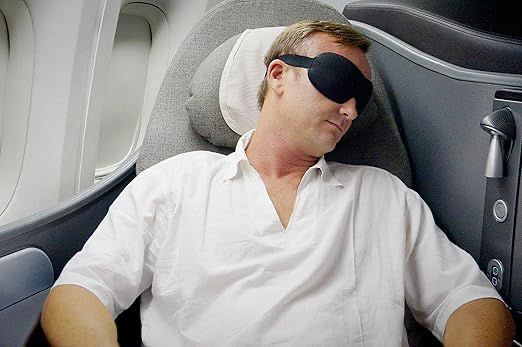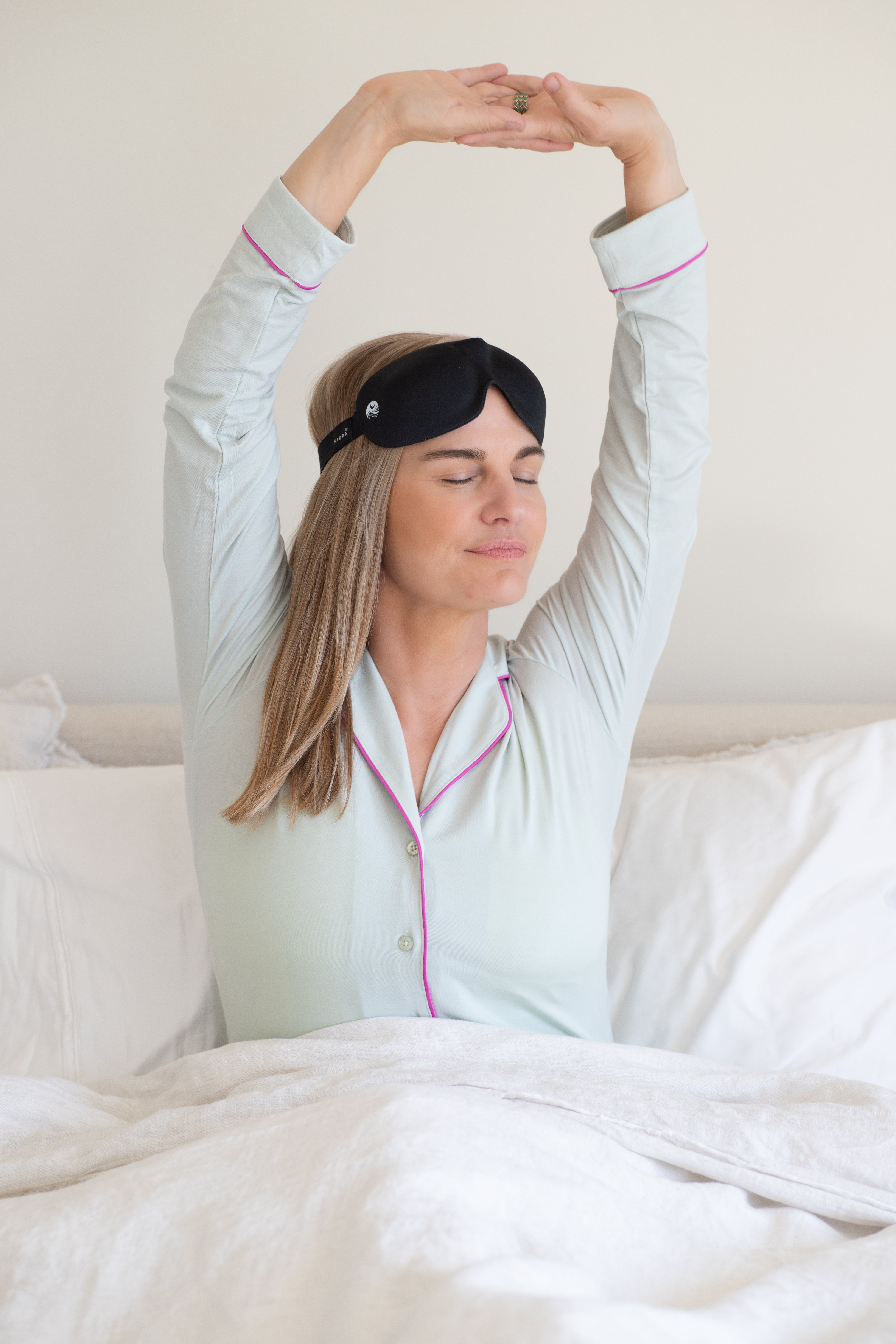Jet lag is one of those inevitable side effects of long-distance travel. Whether you’re hopping continents for business or setting out on your dream vacation, adjusting to a new time zone can be exhausting.
But here’s the good news: better sleep while flying and a smoother transition upon landing are possible. It starts with blocking out the right kind of light at the right time and that’s where Nidra’s expertly crafted sleep masks come in.
Whether you’re a frequent flyer or just planning your next big trip, the Nidra sleep mask might just be the best travel companion you didn’t know you needed.
In this guide, we’ll explore why jet lag happens, how Nidra’s light-blocking design supports faster recovery, and simple tips to sleep better on flights.
Why Jet Lag Happens
Jet lag occurs when your body’s circadian rhythm, your internal clock, is out of sync with the time zone you’ve just entered. Your body is still releasing hormones based on the schedule you had before you traveled.
That means you may feel sleepy in the middle of the day or wide awake at night, depending on the direction and distance of your flight.
Flying east is typically harder on your body than flying west, because you’re “losing” time. And once you land, light exposure becomes one of the most powerful tools in resetting your rhythm. But here’s the catch: exposing yourself to light at the wrong time can make your jet lag worse.
That’s why sleep masks aren’t only about comfort, they’re about control. When you can block out light, you give your body a chance to catch up and reset.
Blocking Light to Reset Your Circadian Rhythm
The Nidra sleep mask is specially engineered to block out 100% of ambient light, even in the brightest airplane cabins or hotel rooms with sheer curtains. Unlike flat sleep masks that press against your eyelids,Nidra’s contoured design uses molded eye cups, creating a blackout effect without any pressure.
Why does this matter?
- Total darkness signals melatonin production, which helps your body transition into sleep mode.
- When you wear a jet lag recovery sleep mask like Nidra’s, you’re essentially telling your brain, “Hey, it’s nighttime, let’s rest.”
- This is especially helpful if you’re trying to nap during the day or fly overnight. Blocking out inconsistent cabin lighting, screens, or sunlight from the window seat is key to falling asleep faster and staying asleep longer.
Many travelers use Nidra as part of a light exposure strategy: wearing the mask when they need to sleep and taking it off when it’s time to be awake and alert in the new time zone. That’s how you use light and dark as tools to regulate your system.

Sleep Tips for Frequent Flyers
If you travel often and find yourself battling jet lag more than you’d like, here are a few strategies to help. These tips, combined with a Nidra sleep mask for flights, can help you reclaim your rest, no matter how far you’re flying.
Plan for the New Time Zone:
If possible, start adjusting your sleep schedule a few days before your trip. Shift your bedtime and wake time by an hour each day so the transition is gentler.
You can also use your Nidra mask at home while making these changes, helping signal bedtime to your brain even before you leave.
Prioritize Sleep on Long-Haul Flights:
The best sleep mask for travel makes all the difference when you’re trying to get quality rest mid-air. Combine your Nidra mask with noise-canceling headphones or earplugs, a travel pillow, and a blanket for a more sleep-friendly setup.
Bonus tip: choose a window seat if possible, so you can lean against the wall and control the light from your window more easily.
Stay Hydrated & Time Your Caffeine:
Drink plenty of water during your flight, but avoid alcohol and caffeine, especially in the hours leading up to your planned sleep time. If you’re wearing your mask and trying to rest, skipping the in-flight coffee will help your body get the message.
Use Light Strategically After Landing:
Once you’ve landed, get natural sunlight in the morning if you're adjusting to an earlier time zone. If you’re flying west and need to stay up later, keep your Nidra sleep mask handy to nap without throwing off your schedule.
The beauty of Nidra’s contoured design is that it’s comfortable enough to wear throughout your trip. The breathable material and gentle fit make it easy to nap on planes, trains, or even in unfamiliar hotel rooms.
Why Travelers Love Nidra
Here’s what sets the Nidra sleep mask for flights apart from standard options:
-
Molded eye cups that create space for blinking and REM movement, great for deep sleep and even lash extensions
-
Comfortable strap for a secure, custom fit without hair pulling or discomfort
-
Feather-light material that stays cool and breathable, even on long-haul flights
- Durable craftsmanship that holds up through years of travel
These are just a few reasons travelers consistently call Nidra the best sleep mask for travel. And unlike cheap alternatives that fall apart or let in light around the edges, Nidra is built with care to support real rest, no matter where your journey takes you.
Your Passport to Better Travel Sleep
Jet lag doesn’t have to derail your trip.
With smart preparation, intentional light exposure, and the right sleep tools in your carry-on, you can rest better and adjust faster. The Nidra sleep mask is more than just an accessory; it’s a simple, science-backed solution for travelers who want to make the most of their time away.
Whether you're flying for work, fun, or family, bring Nidra along and see the difference it makes. Your body (and your sleep schedule) will thank you.






Leave a comment
This site is protected by hCaptcha and the hCaptcha Privacy Policy and Terms of Service apply.